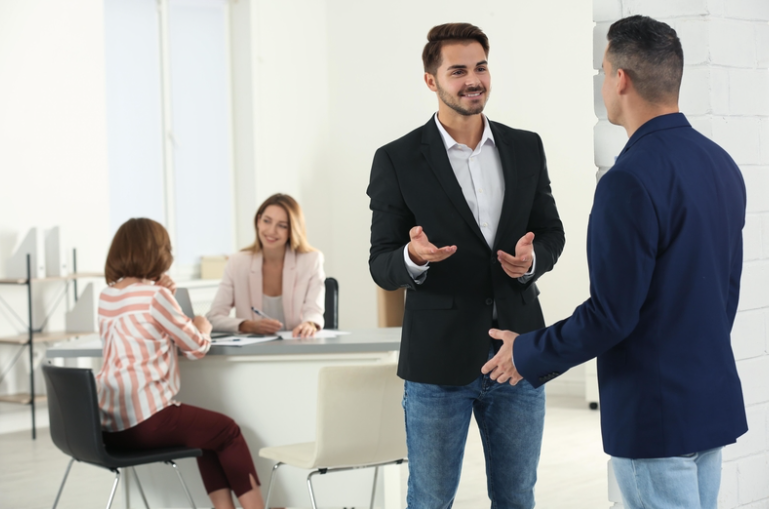Mastering Benefits Communication in the Small Business Setting
In the realm of small businesses, effective communication about employee benefits is crucial. Understanding and conveying the perks and support available can significantly impact both the workforce's well-being and the company's success.
The Importance of Clear Benefits Communication
Effective communication about employee benefits is not just a matter of transmitting information; it's about ensuring that the message is received and understood. The link between how well benefits are communicated and employee satisfaction cannot be overstated. Employees who clearly understand their benefits are more likely to feel valued and satisfied with their employment, leading to higher retention rates and greater workplace morale. Achieving this level of clarity is not without its challenges, especially for small businesses.
Small businesses often grapple with the
complex nature of benefits information, from health insurance details to retirement plan options. The nuances of these subjects can be overwhelming for employees, leading to confusion and frustration. Small businesses may not have dedicated HR departments, making the task of communicating benefits even more daunting. This challenge is further compounded by the diverse needs and preferences of the workforce, requiring a tailored approach to communication.
Inaccurate or unclear communication about benefits can have significant repercussions. Employees may end up underutilizing their benefits simply because they don't understand what is available or how it works. Worse still, misunderstandings can lead to dissatisfaction and distrust, eroding the very foundations of employee-employer relationships. It is, therefore, crucial for businesses to prioritize the clarity and accuracy of their benefits communication.
To overcome these obstacles, businesses must adopt strategies that cater to the specific needs of their employees. This involves providing information in various formats — be it written guides, face-to-face meetings, or digital platforms — to accommodate different learning styles. Simplified language and clear, concise presentations can help demystify complex benefits information. But beyond the method of delivery, the emphasis should always be on making sure the message is understood. Ensuring that employees feel comfortable asking questions and seeking clarification is also key to effective communication.
Clear communication about benefits is integral to fostering employee satisfaction and maintaining a healthy workplace culture. While small businesses may face unique challenges in this endeavor, the effort to enhance understanding among employees is well worth it. By recognizing the potential for misunderstanding and taking proactive steps to address it, businesses can ensure their teams not only receive but truly comprehend the full value of their benefits.
Strategies for Effective Communication
Once the importance of clear benefits communication is acknowledged, the next step is to implement strategies that aid in effectively conveying this information. Different methods need to be employed to cater to diverse employee needs and learning preferences.
Benefit Meetings
Personalized benefit meetings can significantly enhance understanding. These sessions, tailored to various employee groups for relevance, can address the specific concerns and questions of each cohort. For instance, younger employees may be more interested in understanding retirement savings plans, whereas others might prioritize healthcare benefits. Tailoring the sessions helps in making the information more applicable and engaging for attendees.
Simplified Guides
Creating simplified guides that summarize benefits in an easy-to-understand language is another effective strategy. These guides can lay out the benefits in clear terms, omitting jargon that might confuse those unfamiliar with industry terminology. When employees can reference these materials at their convenience, it helps reinforce the information shared during meetings or through digital platforms.
Digital Platforms
Utilizing technology, through digital platforms, offers a dynamic and interactive way for employees to learn about their benefits. Online portals can provide personalized information, allowing employees to see exactly what benefits they are eligible for, how to enroll, and how different choices may impact them financially. Digital platforms can also feature Q&A sections, forums, or chatbots to provide immediate assistance.
The Role of Visual Aids and Examples
Integrating visual aids, such as infographics and charts, can demystify the complexities of benefits options and their impacts. Visualizing information makes it more digestible and easier to grasp., Similarly, using real-world examples helps contextualize how certain benefits work or how they can be beneficial in specific scenarios, thereby aiding understanding and retention of information.
Feedback Loop
Encouraging feedback from employees about how they perceive the benefits of communication is essential for continuous improvement. This feedback loop can identify gaps in understanding and areas where more clarity is needed. Incorporating this feedback into future communications ensures that the strategies evolve to meet employee needs effectively.
Legal Considerations and Compliance
Lastly, it’s imperative to consider the legal requirements in benefits communication. Providing accurate, transparent, and compliant information is not just about best practice—it’s a legal necessity. Ensuring all communications comply with laws and regulations helps in mitigating risks and reinforces the trustworthiness of information shared with employees.
In sum, a variety of strategies can and should be used to ensure effective benefits communication. By incorporating personalized meetings, simplified guides, and digital platforms, enhanced by visual aids and examples, businesses can significantly improve how benefits information is perceived and understood. Establishing a continuous feedback loop and adhering to legal requirements are critical steps in ensuring the efficacy of these communication efforts.
Training Your Team for Better Delivery
Communicating benefits effectively starts with having a well-informed team that is both knowledgeable and compassionate about answering employees' questions. Training sessions that not only cover the nuts and bolts of the benefits packages but also emphasize the importance of clear, empathetic communication can be invaluable. Regular updates and refreshers are also essential, giving HR and benefits teams the latest information to share with employees. This ongoing education ensures that the team is up-to-date on any changes and capable of providing the best advice to employees.
Evaluating Communication Methods: What Works Best?
The effectiveness of different communication strategies can vary widely across organizations. As such, it’s vital to assess which methods are most effective for your specific workplace. This can be done through employee surveys, direct feedback during one-on-one meetings, or by analyzing the usage data of digital platforms. These insights can then guide future communication efforts, ensuring they are as effective and engaging as possible.
Case Studies: Successful Benefits Communication in Small Businesses
Understanding how other small businesses have tackled the challenge of benefits communication can provide valuable insights and inspiration. For instance, a small tech startup might share how they’ve leveraged their in-house app to push notifications about benefits enrollment deadlines and changes in policies. Another case could detail a local cafe that holds monthly casual sit-downs where employees can ask questions about their benefits in a relaxed setting. These real-life examples not only showcase the strategies employed but also the positive outcomes in understanding and employee satisfaction that resulted from these efforts.
Conclusion
Effectively communicating benefits information is a multifaceted challenge that requires a thoughtful, tailored approach. From leveraging technology and visual aids to fostering an environment where feedback is encouraged and acted upon, there are many strategies businesses can employ. By continually seeking to improve communication methods, training teams appropriately, and learning from the successes of others, businesses can ensure that their employees not only understand their benefits but also truly appreciate them. This not only enhances employee satisfaction but also contributes to a more positive, productive workplace culture. In the end, clear communication about benefits is about more than just conveying information; it's about building a foundation of trust and support that benefits both the employee and the organization as a whole. With the right approach, small businesses can overcome the challenges of benefits communication, ensuring their teams are fully informed and confident in the benefits available to them.
Unlock the full potential of your benefits communication with our expert solutions. At Quality Payroll, we understand the unique needs of small businesses and are dedicated to providing clear, impactful benefits communication strategies tailored just for you. Contact us to learn how we can make a difference for your business today.










